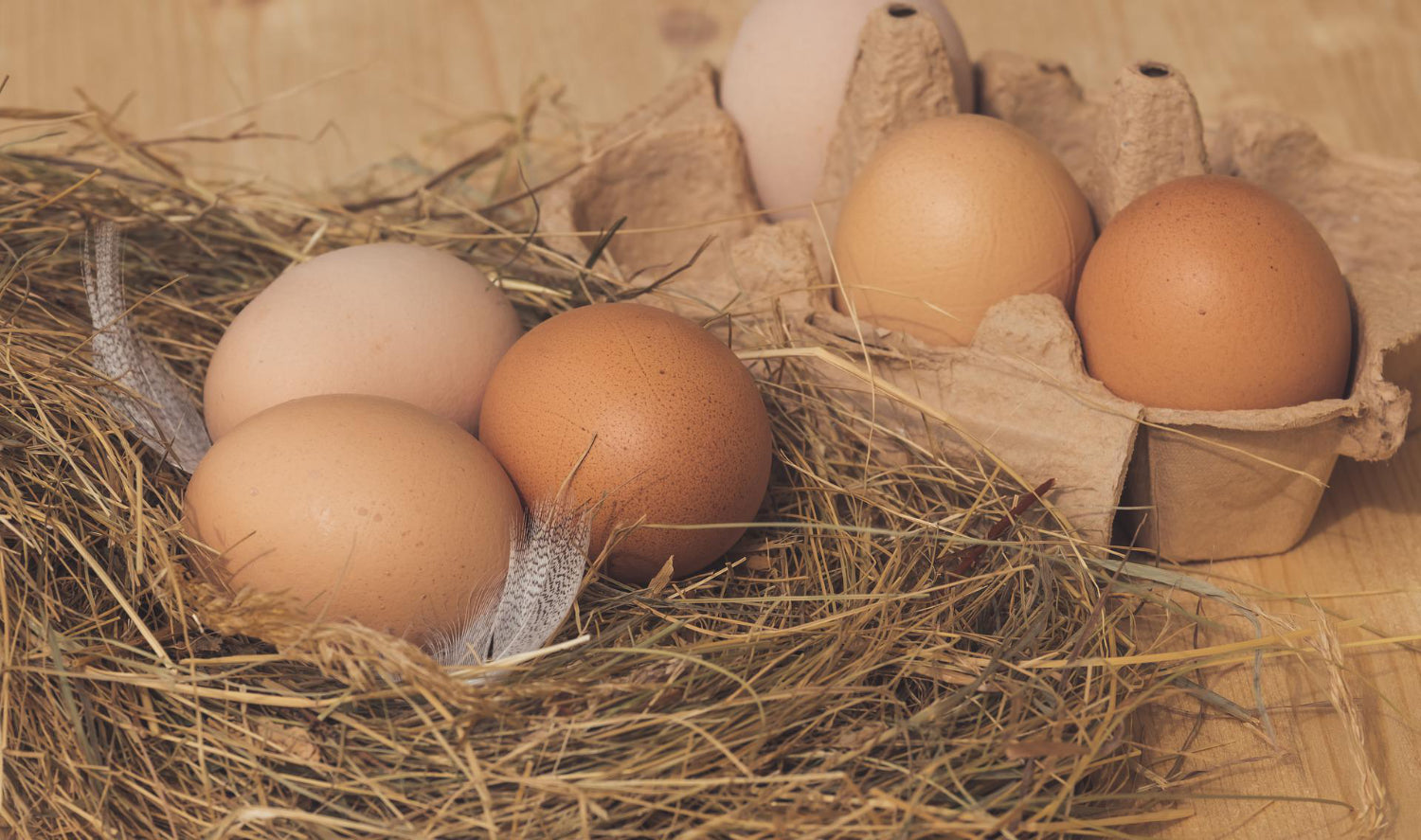Do you know which chickens lay the most eggs? Do you know what color eggs different breeds of chickens lay? We know you have questions about chickens—and specifically their eggs. So in this article, we'll cover everything from the basics, like which chickens lay the most eggs and where they lay them, to more specific information like how many eggs a hen can produce during her lifetime and what color they will be. So whether you're just curious about chickens and their eggs or you're looking for some egg-cellent advice on keeping your own backyard flock, read on!
Which chickens lay the most eggs?
Some of the top egg-laying chicken breeds are the Rhode Island Red, Leghorn, Plymouth Rock, Sussex, Welsummer, Cuckoo Maran, Ameraucana, Easter Egger, ISA Brown, and Australorp. These breeds can lay anywhere from 250-300 eggs per year!
These are all full-sized, standard birds. They have been bred over time to lay more eggs. Other popular chickens, especially in less-rural areas, are bantam birds which are bred to be more decorative. While some of these birds can lay a decent amount of eggs, they are often small and have weak shells. Some popular bantam breeds are the Silkie, Pekin, and Sebright.
Still other birds are meant purely to grow quickly and produce a significant amount of meat. These breeds don't lay many eggs and include the Cornish Cross, Red Ranger, and Freedom Ranger among others.
Which chickens lay which color of eggs?
Did you know that eggs come in a variety of colors? You've seen white and brown eggs at the grocery store, but you can also find eggs that are blue, green, and even pink! The color of a chicken's egg is determined by the breed of the chicken.
White eggs are most often laid by Leghorn, Plymouth Rock, Sussex, Welsummer, Cuckoo Maran, Ameraucana, Easter Egger, and Bantam breeds of chickens.
Chicken breeds that lay brown eggs include Rhode Island Red, Plymouth Rock, Sussex, Marans, and Welsummer.
Oddly enough, the blue eggs sometimes come from chickens with brown feathers! The most common breed of chicken to lay blue eggs is the Ameraucana. While green eggs are lain by Easter Egger chickens, olive eggs come from a mixed breed chicken called the Olive Egger. Red eggs come from a special breed of chicken called the Red Crele Orpington.
It's commonly thought that brown eggs taste better than white eggs. Or the different color of the egg somehow affects the taste or nutritional content. However, this is a myth! The only thing that affects the taste or nutritional content of an egg is what the chicken ate. A chicken's diet will affect the flavor of her eggs, regardless of shell color.
What do chickens need to lay eggs?
Chickens need three things to lay eggs: sufficient nutrition (protein, calcium, vitamins, minerals, and water), a good nesting place, and to reach maturity.
A mature chicken's diet should consist of 15-18% protein to maintain peak egg production. This can be obtained through a diet of commercial chicken feed, kitchen scraps, and any insects they may find. Chickens also need about 3.5% calcium to make strong eggshells. This can be provided through commercial chicken layer feed, crushed oyster shells, or eggshells from previous eggs. Chickens need a variety of vitamins and minerals to stay healthy, which are usually provided through a commercial chicken feed. Finally, chickens need water to stay hydrated and produce eggs. Chickens should have access to fresh, clean water at all times.
While a healthy diet is required to have enough nutrients to produce eggs, their environment is important too. A good nesting place is meant to make a hen feel safe and secure while laying their eggs. Chickens like to have a dark, private place to lay their eggs. A nesting box placed inside their coop and filled with straw or other bedding material is often perfect.
It’s also important to know that it takes some time for a chick to develop into a mature hen and begin laying eggs. In general, chickens reach maturity anywhere from 16 to 24 weeks, depending on the breed. This is the last essential element for egg production. Once a chicken reaches maturity, she will start to lay eggs. Be aware, however, that the number of eggs a hen lays will decrease as she gets older—typically after two or three years.
Wrapping Up
Are you ready to have virtually unlimited fresh eggs? Now that you know more about which chickens lay the most eggs, you're equipped with the knowledge you need to start your chicken-keeping journey.
Just remember that chickens need to reach maturity, maintain a good diet, and have a safe place in order to lay their eggs. The color of a chicken's egg is determined by the breed of chicken and has no bearing on the taste or nutritional content of the egg. So, whether you have a brown egg-laying chicken or a white egg-laying chicken, the only thing that will affect the taste of the egg is what the chicken ate! All you need is a flock of the right breed, a safe place for them, and the right feed. Viola! You have eggs for days!



